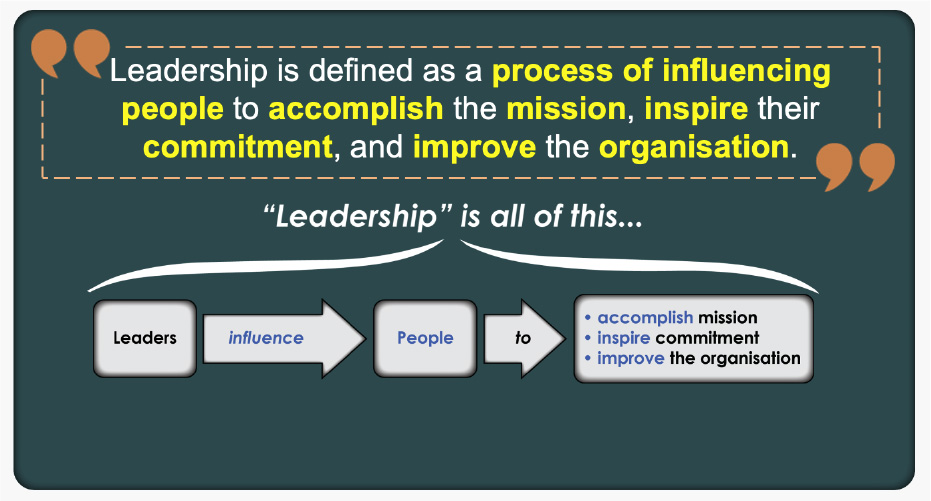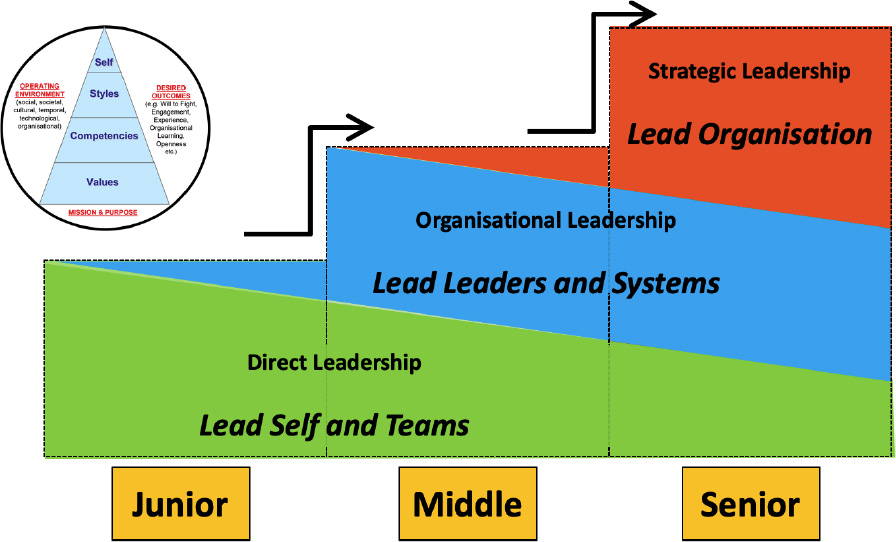
The above definition of leadership says three important things about the meaning of leadership in the SAF:
"A process…"
Leadership refers to the verb “to influence people” rather than the noun, i.e., the category of leaders in the organisation. This emphasises that a person can be appointed as a leader, hold the rank and authority of a leader, and yet have poor leadership ability (i.e., is unable to influence people effectively).
"of influencing people..."
"Influencing" is a general term deliberately chosen to include various methods of influence e.g.: inspirational, emotional or values-based influence, ideas, thoughts, or knowledge-based influence, exemplary or idealised influence, individualised consideration, exchange or transition-based influence. It emphasises that while leadership always involves influence of other persons, and it is not specific to any particular style – "Inspirational leadership" is but one style of influencing task accomplishment. Such a definition allows us to train SAF leaders to use a wide range of leadership styles depending on the nature of the situation.
"to accomplish the mission, inspiring their commitment, and improving the organisation"
These refer to the three major desired outcomes of leadership in the SAF that together present a balanced view of leadership that Is not only mission or task-focused, but also concerned with the commitment of the followers, and the improvement of the organisation, i.e., organisational change and learning. Such a definition emphasises that leaders must not only focus on immediate task performance, but also long-term commitment and change.

The SAF's leadership development targets three levels of leadership across the three leadership corps and Services: Junior-level leaders, Middle-level leaders, and Senior-level leaders. Each level of leaders have different demands in the exercise of Direct Leadership, Organisational Leadership and Strategic Leadership.